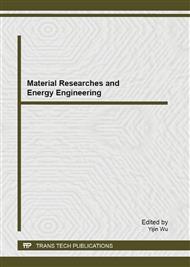[1]
K. Allen: How ESD damage affects OEMs and what they can do to mitigate the damage, PC/104 Embedded Solution (2002).
Google Scholar
[2]
J. Paasi, S. Nurmi, T. Kalliohaka, G. Coletti, F. Gustavino, et al.: Electrostatics 2003 Conference (2003), p.23.
Google Scholar
[3]
ESD Association. Standard ANSI/ESD S20. 20-2007 Protection of Electrical and Electronic Parts, Assemblies and Equipment (Excluding Electrically Initiated Explosive Devices) (2007).
Google Scholar
[4]
International Electrotechnical Commission. IEC 61340-5-1: 2007 standard: Protection of electronic devices from electrostatic phenomena – General requirements (2007).
Google Scholar
[5]
F. Marchini: Journal of Industrial Textiles vol. 20 (1991), p.153.
Google Scholar
[6]
N. Wilson: Journal of Electrostatics vol. 16 (1985), p.231.
Google Scholar
[7]
J.L. Davidson, T.J. Williams, A.G. Bailey and G.L. Hearn: Journal of Electrostatics vol. 51-52 (2001), p.374.
Google Scholar
[8]
J.P. Stothart, S.M. McGill, P. Kathirgamanathan, M.J. Toohey, J. Haase, P. Holdstock, J. Laperre, and G. Schmeer-Lioe: Journal of Electrostatics vol. 49 (2000), p.51.
DOI: 10.1016/s0304-3886(00)00003-6
Google Scholar
[9]
K.B. Cheng, T.H. Ueng and G. Dixon: Textile Research Journal vol. 71 (2001), p.732.
Google Scholar
[10]
C. Donciu and M. Temneanu: Industria Textila vol. 60 (2009), p.134.
Google Scholar
[11]
C. Donciu and M. Temneanu: Industria Textila vol. 60 (2009), p.326.
Google Scholar
[12]
O. Costea, M. Cretu and C. Donciu: 6th International Conference on the Management of Technological Changes vol. 2 (2009), p.661.
Google Scholar
[13]
A.S. Ardeleanu, A. Verejan and C. Donciu: Acta Electrotehnica vol. 51 (2010), p.128.
Google Scholar
[14]
G. Baumgartner: Consideration for developing ESD garment specifications, ESD TR 05-00 Report, ESD Association (2000).
Google Scholar
[15]
Standard EN 1149-5: 2008, Protective clothing - Electrostatic properties - Part 5: Material performance and design requirements (2008).
Google Scholar
[16]
M. Cieslak, S. Wrobel, I. Kaminska and M. Lao: Fibres & Textiles in Eastern Europe vol. 17 (2009), p.52.
Google Scholar
[17]
J.N. Chubb: Journal of Electrostatics vol. 66 (2008), p.531.
Google Scholar
[18]
G. Schmeer-Lioe: Technische Textilien vol. 43 (2000), p.182.
Google Scholar
[19]
J.N. Chubb: Journal of Electrostatics vol. 62 (2004), p.73.
Google Scholar
[20]
M. Cieslak and S. Wrobel: 7th International Symposium EL-TEX 2006 (2006).
Google Scholar
[21]
S. Varnaite, A. Vitkauskas, A. Abraitiene, V. Rubeziene and V. Valiene: Materials Science vol. 14 (2008), p.157.
Google Scholar
[22]
S. Varnaite and J., Katunskis: Fibres & Textiles in Eastern Europe vol. 17 (2009), p.69.
Google Scholar
[23]
Standard EN ISO 6330: 2000; Textiles – Domestic washing and drying procedures for textile testing (2000).
Google Scholar
[24]
K. Tappura, S. Nurmi: Journal of Electrostatics vol. 58 (2003), p.117.
Google Scholar
[25]
J. Paasi, S. Nurmi, R. Vuorinen, S. Strengell and P. Maijala: Journal of Electrostatics vol. 51-52 (2001), p.429.
DOI: 10.1016/s0304-3886(01)00038-9
Google Scholar


